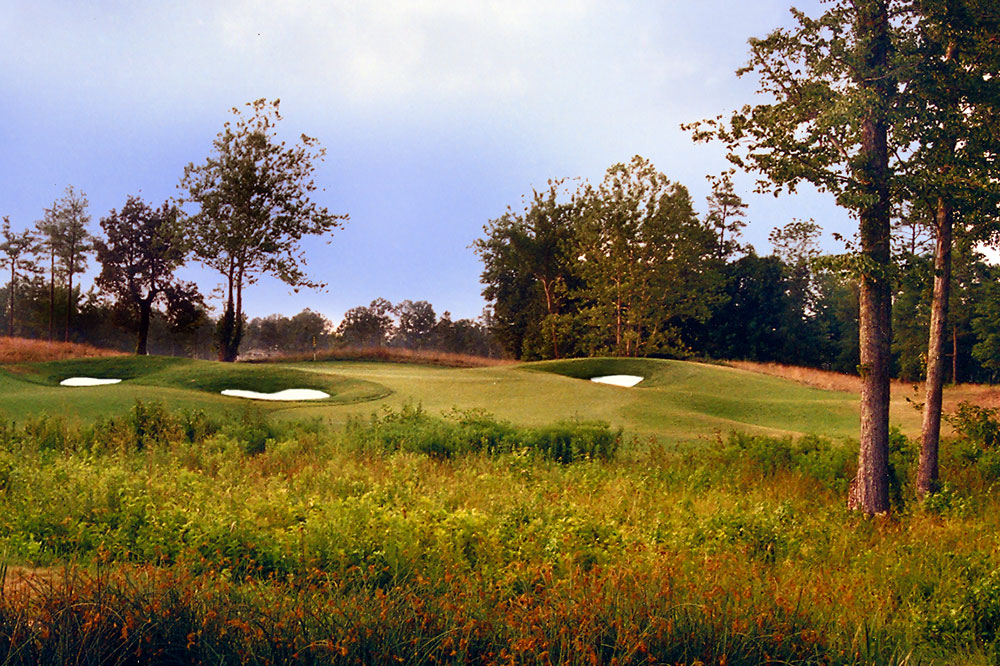Design
New Courses
Existing Courses
ASGCA members are ready to help golf course facilities take on renovation projects big and small. The most common reasons for renovation—which include, overcoming economic issues, correcting maintenance problems, making adjustments in design, improving aesthetics and restoring historic value—can be understood and efficiently managed by an experienced golf course architect.
Case Studies
Longleaf Tee Initiative
An ASGCA Foundation/U.S. Kids Golf Foundation partnership that increases course playability and golfer enjoyment. Golf course operators work with ASGCA members to strategically expand existing tee complexes and, as a result, increase rounds and improve pace of play. More InformationFrequently Asked Questions
How much land do I need to build a golf course?
According to “Building a Practical Golf Facility” by Dr. Michael Hurdzan, ASGCA Fellow, “For example, a typical par 4 hole of 400 yards will take up to 10.4 acres (420 yards long with buffers x 120 yards minimum width). So, a 10-acre parcel could contain one 400 yard long hole, or perhaps three or four par 3s ranging in length from 60 yards to 150 yards, and with skilled design, perhaps more.
“This means an 18-hole course of all short par 3s could be built on as little as 30 acres, while an intermediate length or executive course of 18 holes of par 3s and 4s would require 75-100 acres, and a full size par 72 course would need 120-200 acres. This assumes, of course, only usable land which does not allow for wetlands, restricted areas, or land not easily made part of the golf area.”
How much does it cost to design and build a golf course?
In “Building a Practical Golf Facility” by Dr. Michael Hurdzan, ASGCA Fellow, you may read about more than a dozen golf facility development cases. The cases each describe the type of course built and list the construction cost and maintenance budget. For example, you can read about John’s Golf Course in Eureka, Mont., which was built for nothing and costs nothing to maintain. It was conceived as a project for a father and son and was built on their own land over time. Or, you can learn about the Heritage Oaks Golf Course in Harrisonburg, Va. which was constructed for just over $3 million and costs nearly $500,000 to maintain annually.
The answer to this question about building a golf course is similar to “How much does it cost to buy a house?” Both questions have the same answer: “It depends.” Talking with a golf course architect early in the development or remodeling process will help you get a handle on developing a realistic budget.
How do golf courses affect environment and wildlife?
According to the 3rd edition of An Environmental Approach to Golf Course Development by Bill Love, ASGCA,
“The development of a golf course has become a complex process. To deal with it, golf course architects provide the expertise necessary to create design solutions for golf courses that are compatible with the environment. A golf course presents the opportunity to meet a need for recreational amenities, while preserving green space that will provide benefits for the future development of an area. Often, the green space of a golf course can serve as a protective buffer between sensitive environmental areas and development. This buffer, which contains extensive turfed areas and vegetation, will also protect water quality by providing stabilization against erosion and storm water management. Efficient and responsible maintenance practices for the golf course will promote the proper use and conservation of water resources. A golf course can provide enhancement to the environment by incorporating areas for conservation and the promotion of wildlife habitat. Where land has been degraded over time by intensive use or mismanagement, golf courses can provide much needed land improvement. These are benefits that can result when an environmental approach is used for the design, construction and maintenance of a golf course.”



